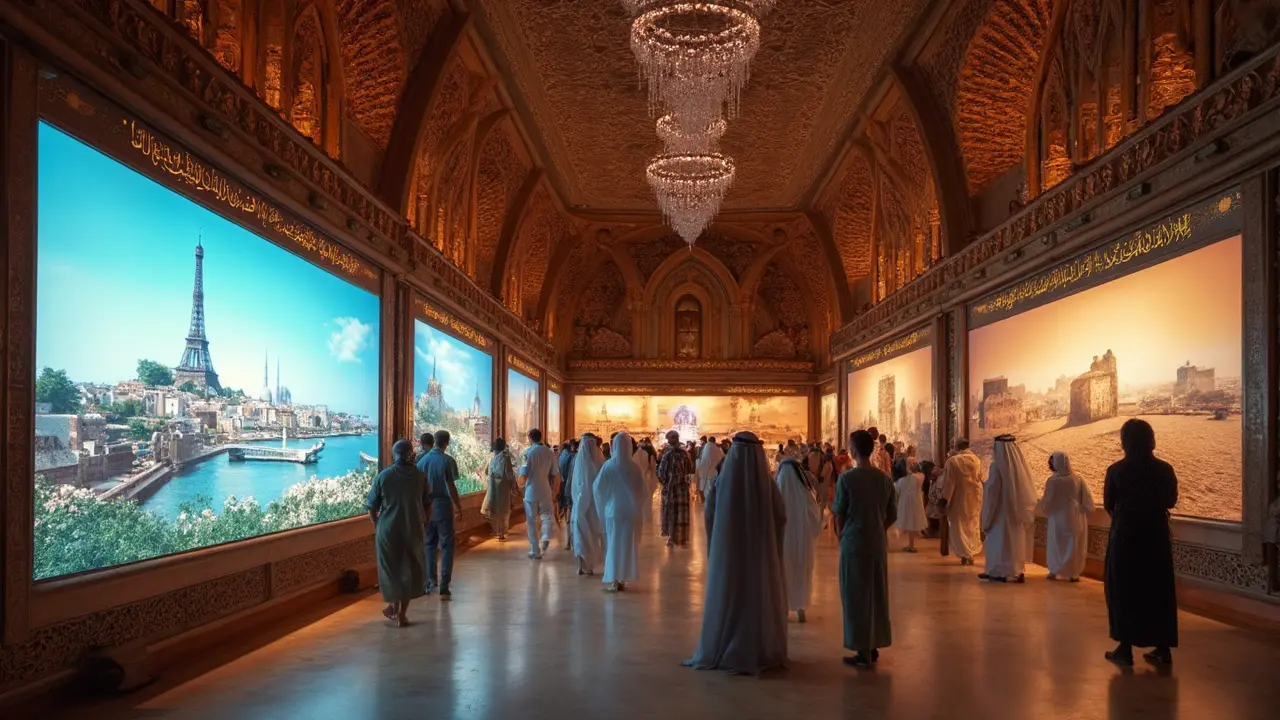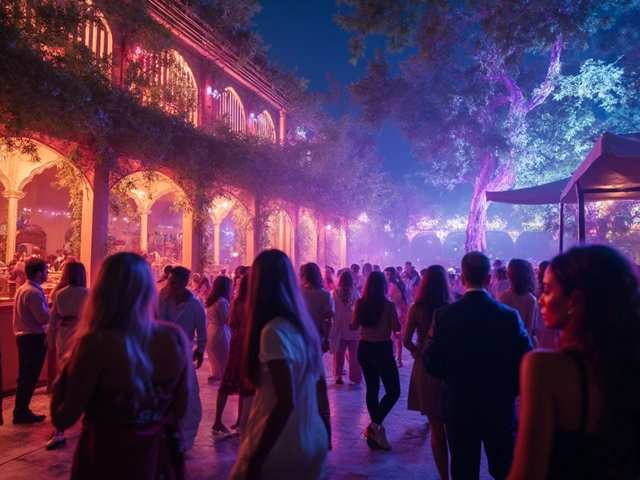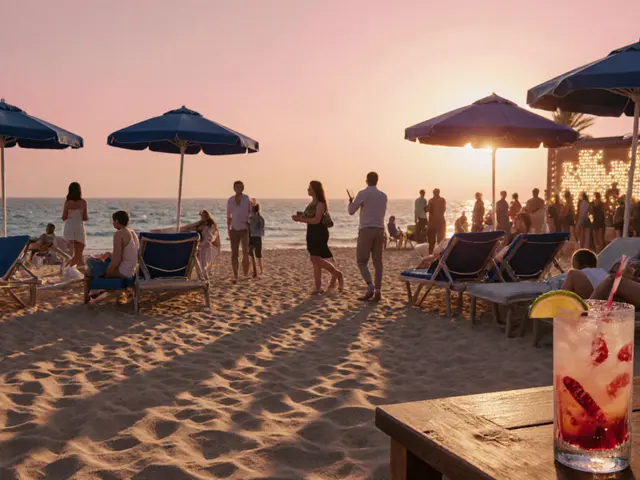
Everyone who lives in Dubai—or even just swings by for a few days—knows the city is packed with jaw-dropping modern marvels. But look past the glossy towers and air-conditioned malls, and you’ll realize there’s a whole other side: Dubai’s historic landmarks show off a story just as bold as the city’s skyline. If you want your weekend plans to have a touch of culture, or you’ve got visitors eager for more than just brunch at Jumeirah, exploring Dubai attractions with deep roots is the move.
Places like Al Fahidi Historical Neighbourhood let you step straight into Dubai’s trading past. While the Burj Khalifa grabs the headlines (and your camera roll), winding alleyways near Dubai Creek are where the city’s story really began. And don’t forget about the old Al Fahidi Fort, which now houses the Dubai Museum. It’s a bit of a time machine—my own daughter, Zinnia, loved running her hands over the cool stone, asking questions about how people lived before air con and iPads.
If you want to really soak up history, timing is everything. Summer mornings or just before sunset give you cooler strolls and softer light for photos. And with public transport right at your fingertips—think the Dubai Metro’s Al Fahidi or Al Ghubaiba stations—it’s easier than ever to skip the traffic. If you’ve got kids or elder family along, look up wheelchair access and shaded rest areas on the official Dubai Culture website before you head out.
- Dubai's Iconic Sites: More Than Just Glitter
- Historic Gems Hidden in Plain Sight
- Global Landmarks with Stories That Stick
- Visiting Tips: What Every Dubai Resident Should Know
- Bringing the World Home: Connecting Dubai to Global Heritage
Dubai's Iconic Sites: More Than Just Glitter
You can’t talk about Dubai without mentioning its show-stopping landmarks. But these sites are more than just photo ops—they actually hold the secrets to how Dubai has transformed in just a few decades. Everyone knows about the Burj Khalifa; it’s the world’s tallest building, standing at 828 meters. Locals sometimes take it for granted, but seeing it up close—especially at night when the lights flash and water from the Dubai Fountain dances beneath—it really hits that you’re looking at an engineering record-breaker.
If you want to visit Burj Khalifa, booking tickets online is way cheaper than buying at the door, and you can choose between the 124th and 148th floor viewing decks. The best views hit right at sunset, when you can catch the city and the sea glowing gold.
For something with a historic twist, hop over to the Dubai Frame. This gold-plated mega-structure in Zabeel Park isn’t just for Instagram. The whole point is to see old Dubai on one side (think Deira’s bustling souks) and new Dubai’s skyscrapers on the other—literally framing the city’s transformation. Early mornings mean shorter queues and cooler weather, which is great if you’re bringing family along.
Love retail therapy with your sightseeing? The Dubai Mall is a landmark all on its own. Sure, everyone brags about its aquarium, skating rink, and over 1,200 shops, but did you know it attracts more than 100 million visitors a year? Busier than Times Square in New York, honestly.
A quick comparison, so you know what you’re dealing with:
| Landmark | Opened | Key Fact | Annual Visitors |
|---|---|---|---|
| Burj Khalifa | 2010 | Tallest building worldwide | ~2 million (observation deck) |
| Dubai Mall | 2008 | Largest mall in the world | 100 million+ |
| Dubai Frame | 2018 | World’s largest frame structure | 2 million+ |
If you’re into something slightly outside the usual Insta-feed, swing by the Museum of the Future on Sheikh Zayed Road. A lot of kids in Dubai love the robot demos and VR exhibits—Zinnia never wants to leave, and pro tip: buy tickets in advance, as slots fill up weeks ahead.
Remember, most of these hot spots have direct metro links or RTA buses, and there’s usually underground parking if you’re braving traffic. For UAE residents, carrying your Emirates ID sometimes gets you discounts at certain spots, especially during festivals like Dubai Summer Surprises or UAE National Day.
Historic Gems Hidden in Plain Sight
It’s easy to get dazzled by Dubai’s shiny new developments, but the city has treasures that outlasted the boom. Some of the most fascinating historic sites are right under our noses—just often overlooked by the crowds chasing the next hotspot selfie. Let’s break down a few places you probably walk or drive past all the time, but may not know the details about.
Dubai landmarks like Al Shindagha Museum in the old Shindagha district offer a deep-dive into the UAE’s roots as a pearl diving and trading hub. The Sheikh Saeed Al Maktoum House, which dates back to 1896, was once home to Dubai’s former ruler and now houses rare photographs, maps, and old coins. There’s something cool about seeing images of Dubai before skyscrapers took over the skyline—it’s a total perspective shift, especially for kids growing up here.
Care for something off the main trail? Head over to Al Bastakiya. This quarter is home to wind-tower architecture and quiet art galleries that make a walk feel like stepping into another era. Stop at the XVA Art Hotel for a fresh lime juice and check out the quirky exhibitions in the surrounding courtyards.
For a real sense of trade and connection, explore the Gold and Spice Souks in Deira. Even if you’re not buying, the narrow alleys, bold scents, and local banter are pure old-Dubai. The souks have operated for decades, with some jewelry shops running since the 1940s. Bargaining is expected—and honestly, kind of fun—so don’t feel weird about haggling over that gold bangle.
Curious about visitor stats? Check this quick breakdown:
| Landmark | Year Established | Annual Visitors (approx.) |
|---|---|---|
| Al Fahidi Fort (Dubai Museum) | 1787 | 1,000,000 |
| Gold Souk | 1940s | 6,000,000 |
| Al Bastakiya | 1890s | 750,000 |
| Sheikh Saeed Al Maktoum House | 1896 | 500,000 |
Before you go, double check opening hours as some historic sites still close for midday prayers or on Fridays. Dubai’s heat can make wandering tricky, so bring water and sunglasses, and try these spots in the cooler months (November-March works best). If you use Careem or RTA taxis, just mention the proper landmark name, and almost every driver knows these heritage sites by heart.

Global Landmarks with Stories That Stick
Lots of folks in Dubai love to travel, and hearing first-hand stories after someone returns from seeing the pyramids or Paris is pretty common at Friday gatherings. But what actually makes these places unforgettable? It's their crazy histories, the wild facts behind their fame, and sometimes, how they hint back at places right here in Dubai.
Take the Eiffel Tower. It was supposed to be a temporary structure for the 1889 World’s Fair, but now more than 7 million people visit every year. Locals in Paris even tried to get it torn down because they thought it was ugly—imagine Dubai residents complaining about the Burj Khalifa’s look! Speaking of which, here’s a quick comparison of visitor numbers among top global landmarks:
| Landmark | Location | Annual Visitors |
|---|---|---|
| Eiffel Tower | Paris | 7 million+ |
| Great Wall | China | 10 million+ |
| The Colosseum | Rome | 7 million |
| Sydney Opera House | Sydney | 8.2 million |
| Burj Khalifa | Dubai | 17 million (Sky deck/area) |
If you’re looking for something truly ancient, check out the Pyramids of Giza. The Great Pyramid is over 4,500 years old and was the tallest man-made structure in the world for more than 3,800 years—Burj Khalifa has only held the title for about 15 years so far. These old sites always have a daily limit on visitors, so if you plan a side trip from Dubai, book online weeks ahead, especially during holiday seasons.
Asia has its share too. The Taj Mahal was built as a love letter in marble, not just a tourist attraction. Over 6 million people see it yearly, and sunrise is the best time to avoid busy crowds and catch that glow. Pro-tip for Dubai residents: buy your entrance tickets online to skip the long lines, and watch out for heat—think of it like visiting Al Fahidi in August!
- Always check official sites for ticket pre-booking.
- Look for guided tours with multilingual options, since many global landmarks now offer Arabic audio guides.
- Pay attention to rules—some places won’t let you bring large bags, selfie-sticks, or food inside.
When visiting these famous spots, it’s easy to compare them to Dubai attractions—the precision of the Burj Khalifa’s lifts or the mix of people at Dubai Mall. That’s what makes travel fun. You start noticing those little details, and suddenly, stories from around the world feel a bit closer to home. And honestly? No matter where you go, returning to Dubai’s blend of history and high-tech comforts feels pretty sweet.
Visiting Tips: What Every Dubai Resident Should Know
Before you race out the door to see Dubai landmarks or any top spot in the UAE, a little planning goes a long way. Peak tourist seasons, like New Year’s and school breaks, can mean long lines at the Burj Khalifa or even the Dubai Frame. If you want a quieter experience, hit these sites on weekday mornings. Fridays tend to be the busiest, thanks to weekend crowds and special events, so keep that in mind if you want an easy parking space or a last-minute Dubai Mall reservation.
Dubai gets hot—no surprise there—so stash a reusable water bottle (loads of refill stations in malls and major landmarks now), and pack sunscreen if you’re exploring outdoor areas like Al Seef or Jumeirah Mosque. Most spots offer indoor, air-conditioned routes, but you’ll still walk between buildings or through open courtyards, especially in heritage districts.
Public transport here is reliable, clean, and affordable. The Metro takes you right to major attractions like Dubai Mall or Burj Khalifa/Dubai Mall station. RTA buses and water taxis cover the historic side near Dubai Creek and the Gold Souk. If you’re bringing family, look for combo tickets—many attractions offer discounts for UAE residents and families, plus extra perks for kids. You can often book these online through sites like Platinumlist or directly from each venue’s official page.
- Dubai landmarks usually have dress codes. At places like mosques and some museums, cover your knees and shoulders. Scarves are provided at Jumeirah Mosque if needed.
- Taxis accept Nol cards in most places, but always check before you get in, and keep some cash just in case.
- For famous sites like the Sky Views Observatory, buying tickets in advance (especially during Expo City events) saves you time and sometimes money.
- Many sites, like the Dubai Museum or Etihad Museum, display info in Arabic and English. Audio guides and mobile apps are available if you want more details on the spot—useful for curious kids or visiting family who don’t speak Arabic.
- Food courts and cafes on-site are family-friendly, but for a true Emirati experience, try a traditional breakfast at Arabian Tea House in Al Fahidi, or grab karak chai at a corner kiosk nearby the Creek.
If you want to avoid crowds and long wait times, try exploring right at opening or just before closing. Many historical sites offer guided tours—locals usually know to ask about these, since private tours go deeper into the stories behind each building. Always keep an eye out for the UAE's frequent public events and festivals, which sometimes open up rare access to usually restricted areas of famous landmarks.

Bringing the World Home: Connecting Dubai to Global Heritage
Dubai has this habit of picking up inspiration from all corners of the planet. You can see it in the food courts (where else do you find shawarma and sushi side by side?) and most famously in its Dubai landmarks. The city loves to take global heritage and give it a fresh Dubai spin, blending tradition with something new.
Think about Global Village – every winter, this spot pops up, literally bringing the world to Dubai’s backyard with over 90 cultures represented through pavilions, crafts, food stalls, and shows. It’s not window dressing either. Last season, Global Village attracted more than 9 million visitors—most of them Dubai residents and families—making it one of the world's largest cultural festivals.
Even local malls get in on the act. The Ibn Battuta Mall, inspired by the journeys of the Moroccan explorer Ibn Battuta, features sections themed after Egypt, India, China, and more. You can stroll from a replica of the Great Mosque of Samarra to Chinese dragons in twenty minutes—way cheaper than a world tour.
For anyone curious about how Dubai compares to other must-see places, check out this quick table:
| Landmark | City/Country | Visitors Annually |
|---|---|---|
| Burj Khalifa | Dubai, UAE | 16 million |
| Eiffel Tower | Paris, France | 7 million |
| Great Wall | China | 10 million |
| Machu Picchu | Peru | 1.6 million |
Dubai's approach means you don’t need to hop on a plane to feel connected to world heritage. Local museums like the Dubai Museum and Etihad Museum run cultural workshops, movie nights, and art days that pull ideas and history from around the world. If you're into global literature or architecture, check out events hosted by Alserkal Avenue—they bring in artists and speakers from every continent, right in Al Quoz.
If you want to level up your own connection to world culture without leaving the city, try these tips:
- Follow Dubai Calendar for updates on international art shows, food festivals, and heritage days.
- Drop by Dubai Public Library branches—many have foreign language collections and themed events.
- Sign up for tours at Jameel Arts Centre or the Crossroads of Civilizations Museum to get a world-class education in just a few hours.
What’s cool is that in Dubai, bringing the world into your life isn’t hard. With so many global influences around every corner, you might even end up surprising your friends with stories and trivia from places you haven’t visited—yet.



